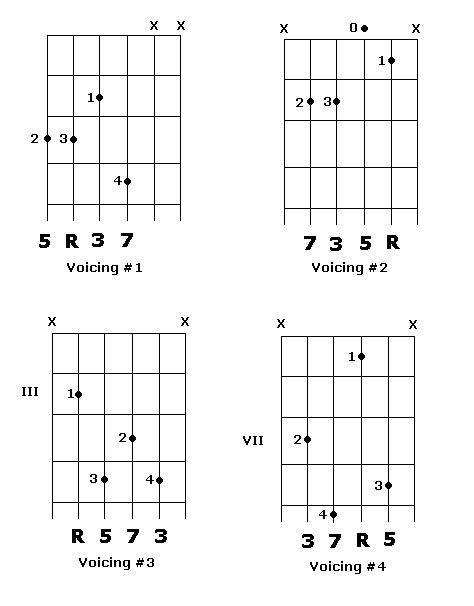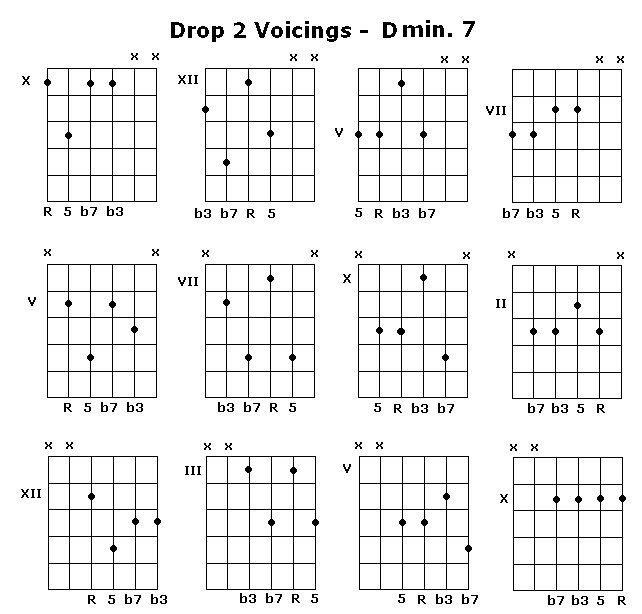
Diagram 1 - Four Voicings for a C maj. 7th Chord



|
C ==> E ==> G ==> B G ==> B ==> C ==> E B ==> C ==> E ==> G E ==> G ==> B ==> C |
|
|
R ==> 3 ==> 5 ==> 7 5 ==> 7 ==> R ==> 3 7 ==> R ==> 3 ==> 5 3 ==> 5 ==> 7 ==> R |
| No. | Chord | Formula |
|---|---|---|
| 1 | Maj.7 | R 3 5 7 |
| 2 | Min.7 | R b3 5 7 |
| 3 | Dom. 7 | R 3 5 b7 |
| 4 | Min.7 (b5) | R b3 b5 b7 |
| 5 | Min. Maj. 7 | R b3 5 7 |
| 6 | Min.7 (#5) | R b3 #5 b7 |
| 7 | Maj.7 (b5) | R 3 b5 7 |
| 8 | Maj.7 (#5) | R 3 #5 7 |
| 9 | Dom.7 (b5) | R 3 b5 b7 |
| 10 | Dom.7 (#5) | R 3 #5 b7 |
| 11 | Dom.7 sus4 | R 4 5 b7 |
| 12 | Maj.6 | R 3 5 6 |
| 13 | Min.6 | R b3 5 6 |
| 14 | Dim.7 | R b3 b5 bb7 |
| 15 | Tonic Dim. | R b3 b5 7 |



